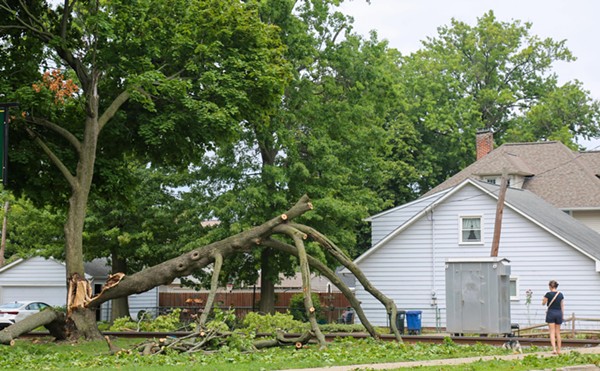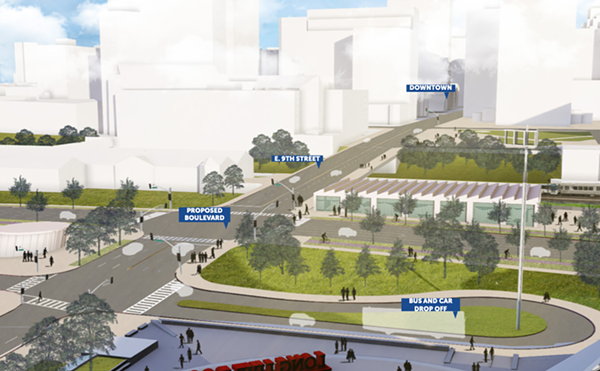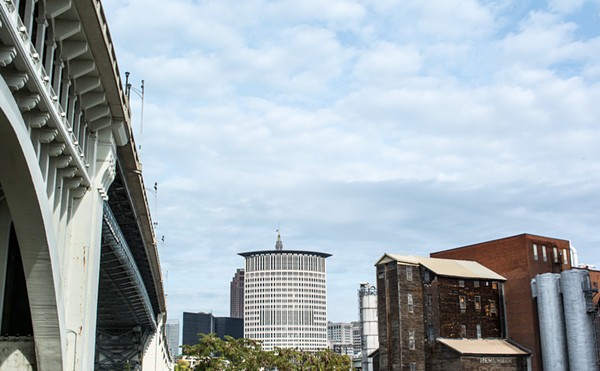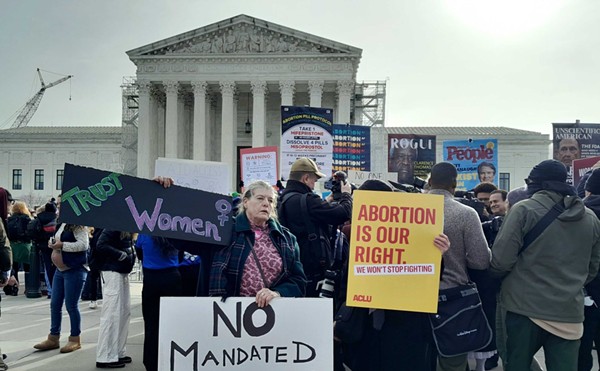[
{
"name": "Ad - NativeInline - Injected",
"component": "38482495",
"insertPoint": "3",
"requiredCountToDisplay": "5"
},{
"name": "Real 1 Player (r2) - Inline",
"component": "38482494",
"insertPoint": "2/3",
"requiredCountToDisplay": "9"
}
]
Now is the time for big changes at Cleveland city hall.
It is time for a reformed mayor.
It is time for a reformed city council, too.
The balance of power has gotten too, too far out of whack.
We have too much “going along” with no real questions asked.
Giving $1 billion to one billionaire for his desires on the Cuyahoga River and not saying NO to another billionaire angling for a $1 billion for a new sports stadium yells to Clevelanders that its elected officials are working for somebody else.
You can smell it in the closeted information that is getting to the general public about the city’s most expensive sports stadium maneuvering with the Haslams, who laughably talk about concern for the fans.
Please!
Mayor Justin Bibb’s “shore to core to shore” program gimmick shifts more than a billion dollars in property taxes from their scheduled path to support what now seems a 45-year development by billionaire Cavs owner Dan Gilbert. Meanwhile, the city wants the Browns to stay in a renovated lakefront stadium while the Haslams telegraph that they are bound for Brook Park.
The Plain Dealer, which should critically be examining these historic moves, peddles a sales tax in expanded county area to finance even MORE sports stadiums instead of telling us about the crime taking place.
The sales tax, now at 8 percent, hits hardest the less family income you have.
If you haven’t picked up what’s going on you might wonder why the public sector gets the bill while the private sector gets the goodies.
We have a city full of problems, bursting with needs.
But the attention of Mayor Bibb and Council President Blaine Griffin seems to concentrate on downtown Cleveland, not where most of their constitutes live. Not, certainly, where those with needs reside.
The TIF apparently will subsidize a practice facility for the Cavs and a medical spot for the Cleveland Clinic and more.
In other words, just what needy Clevelanders really need.
Every generation or two, public outrage over the lack of balance between people needs and private desires gains attention.
It’s been a long time since that has happened here.
But the imbalance between public poverty and private riches has become glaring again.
I’m reminded of the title of former Plain Dealer editor Phil Porter’s 1970s book, “Cleveland – Confused City on a Seesaw.” Porter was critical of 1960s urban renewal investment downtown. He saw it as pouring public investment into one area of downtown to the disinvestment that took place elsewhere downtown. Shifting, not really creating new.
Why is subsidizing sports facilities more important or valuable than subsidizing grocery stores in neighborhoods suffering needy food deserts?
Why is subsidizing hotels, restaurants and luxury apartments on the river or lakefront more important than providing housing in neighborhoods where housing is needed?
The Bibb administration is deciding way into the future by pushing a massive subsidy of 45 years duration and a shift of property taxes worth more than $1 billion for the Bedrock project at Tower City and behind to the Cuyahoga River.
The plan is proposed by Cavaliers owner Dan Gilbert, billionaire owner of Bedrock and Rocket Mortgage.
It comes with the usual promises of neighborhood help.
We’ll give $25 million now for your city needs, Council is told by administration officials. But the deal calls for a $1 billion in taxes to go to the developers over 45 years. What a deal!
Council tried to sound critical.
Mike Polensek noted in a warning that the Gateway deal promised 28,000 jobs but still hasn’t delivered. But he noted that a businessman told at the time it was merely a selling point, not real. He left it there.
I listen to several hours of council questioning Bibb administrators and Bedrock spokespersons.
I hadn’t been to a council committee hearing for at least 20 years. But nothing seems to have changed.
I heard the usual claptrap about insuring jobs for blacks as a reason for bestowing a billion tax dollars for a private investment.
Majority leader Kerry McCormack even waxed about how the Gilbert $3 billion project would finally allow Clevelanders access to the Cuyahoga River. Where has he been? Since Moses Clevealand came to the Cuyahoga River in 1796, Clevelanders know where the river and the Flats are.
Even Fannie Lewis, long deceased, seemed to make her way to the council table as members searched for relevance. Joe Jones everyone reminded that she sat at the table.
She would have called this deal as she did a Gateway deal: “This ties the city up like a hog.” She often seared the sophistry of her better educated colleagues.
Very little of consequence, however, breaks through. Why don’t things change? Probably because the deck is stacked.
Phil Porter’s 1970 book “Cleveland – Confused City on a Seesaw,” has lessons for today.
Porter, former executive editor of the Plain Dealer, was retired when he wrote a warning good for today – a big failed downtown promotion called Erieview. Porter called it “…one of the city’s biggest mistakes.”
It asks the often overlooked question: When you develop here, what happens over there.
Porter wrote:
“When completed, Erieview would shift the center of commercial gravity in downtown Cleveland away from Euclid Avenue toward the lakefront. The office workers in Erieview would be compelled to walk, or find special transportation, a half mile or more to the stores on Euclid and the good restaurants near them. This would be difficult and uncomfortable in winter.”
Wonder how many riverfront strollers Bedrock will get in Cleveland’s winter.
Porter says Erieview destroyed Euclid Avenue from East 14th to Public Square, as the main, fashionable, nationally famous shopping center of Cleveland.
Bibb and Griffin are attaching their stars to the riverfront and lakefront developments. They will both be gone long before the results are in. Both will divert property taxes and who knows what other subsidies to these downtown-related private efforts.
When Erieview was planned the city had some 750,000 residents.
It has shrunk considerably.
It now (2024) has some of 359,000, less than half in the 1970s. It continues to lose residents. Even Cuyahoga County has been losing population. In 1950 it had 1.3 million population; by 2023 it was 1.2 million with a loss of 31,600 since 2020.
We are taxing fewer people more heavily for richer string-pullers.
It can only mean future troubles.
Subscribe to Cleveland Scene newsletters.
Follow us: Apple News | Google News | NewsBreak | Reddit | Instagram | Facebook | Twitter | Or sign up for our RSS Feed














